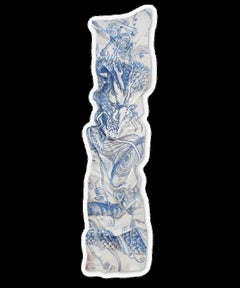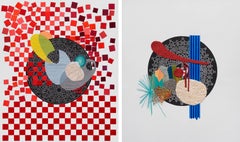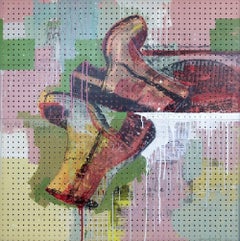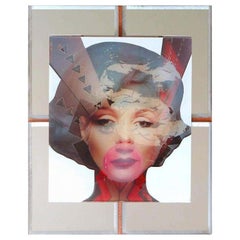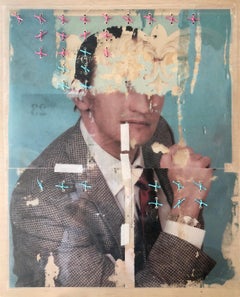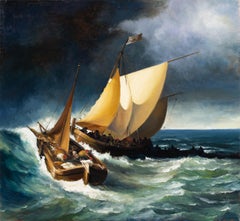Florida - More Art
2010s Florida - More Art
Textile
2010s Contemporary Florida - More Art
Cotton, Thread, Sailcloth
2010s Pop Art Florida - More Art
Wood, Oil Pastel, Mixed Media, Acrylic, Graphite, Paper
2010s Modern Florida - More Art
Mirror, Wood, Plexiglass, Photographic Film
2010s Pop Art Florida - More Art
Cotton, Paper, Mixed Media, Wood Panel, Graphite, Plastic
2010s Realist Florida - More Art
Canvas, Oil
Artist Comments
I was inspired to create this piece after spending several days in the Henry Mountains in Utah. It was monsoon season and after some storms, the clouds were c...
21st Century and Contemporary Abstract Impressionist Florida - More Art
Oil
2010s Contemporary Florida - More Art
Cotton, Thread, Sailcloth
Mid-20th Century Abstract Geometric Florida - More Art
Glass
2010s Pop Art Florida - More Art
Mixed Media, Graphite, Wood, Oil Pastel, Acrylic
2010s Contemporary Florida - More Art
Cotton, Thread, Sailcloth
2010s Pop Art Florida - More Art
Cotton, Paper, Mixed Media, Graphite
Mid-20th Century Modern Florida - More Art
Wool
2010s Pop Art Florida - More Art
Mixed Media, Wood Panel, Nylon
2010s Pop Art Florida - More Art
Cotton, Paper, Mixed Media, Graphite
2010s Pop Art Florida - More Art
Screen
2010s Modern Florida - More Art
Paper, Acrylic
2010s Modern Florida - More Art
Paper, Acrylic, Watercolor
2010s Pop Art Florida - More Art
Cotton, Paper, Mixed Media, Graphite
2010s Street Art Florida - More Art
Screen
2010s Pop Art Florida - More Art
Cotton, Paper, Mixed Media, Graphite
2010s Pop Art Florida - More Art
Cotton, Paper, Mixed Media, Graphite
2010s Pop Art Florida - More Art
Cotton, Paper, Mixed Media, Graphite
2010s Pop Art Florida - More Art
Cotton, Paper, Mixed Media, Graphite
2010s Pop Art Florida - More Art
Wood, Oil Pastel, Mixed Media, Acrylic, Graphite
2010s Contemporary Florida - More Art
Cotton, Thread, Sailcloth
2010s Pop Art Florida - More Art
Archival Paper, Giclée
Late 19th Century Florida - More Art
Silver
2010s Pop Art Florida - More Art
Cotton, Paper, Mixed Media, Graphite
1950s Cubist Florida - More Art
Ceramic
Late 19th Century Rococo Florida - More Art
Wood
2010s Street Art Florida - More Art
Wood, Mixed Media
2010s Pop Art Florida - More Art
Cotton, Paper, Mixed Media, Graphite
Late 20th Century Abstract Geometric Florida - More Art
Metal
1990s Abstract Expressionist Florida - More Art
Canvas, Oil
21st Century and Contemporary Post-Modern Florida - More Art
Blown Glass
1990s Contemporary Florida - More Art
Fabric
2010s Street Art Florida - More Art
Wood, Birch, Screen
20th Century Contemporary Florida - More Art
Metal
Artist Comments
This is an original landscape painting created with a palette knife inspired by Bliss Carmen.
About the Artist
Russian-born Tatiana Iliina lives in Montreal and has sold paintings to collectors all over the world. She works with both abstract and representational compositions, with many pieces falling somewhere in between. Some of Tatiana’s paintings could be interpreted as a landscape or a cityscape, or a non-representational articulation of color, giving the viewer the opportunity to make independent decisions about the work. Her long brushstrokes and painterly style are created using a palette knife, resulting in richly textured canvases. Working in a range of colors from muted grays to bold blues, vibrant purples, and glowing oranges, Tatiana’s portfolio reflects an array of moods while maintaining a focus on her iconic style.
As a Dream...
21st Century and Contemporary Abstract Impressionist Florida - More Art
Acrylic
2010s Realist Florida - More Art
Canvas, Oil
Mid-20th Century Modern Florida - More Art
Metal
1950s Modern Florida - More Art
Canvas, Oil, Other Medium
20th Century American Modern Florida - More Art
Wool
2010s Realist Florida - More Art
Canvas, Oil
2010s Florida - More Art
Paper
1950s American Modern Florida - More Art
Paper, Ink
20th Century Folk Art Florida - More Art
Wool, Felt
1960s Modern Florida - More Art
Gold, Enamel
20th Century Modern Florida - More Art
Blown Glass
18th Century Victorian Florida - More Art
Engraving
Late 19th Century Florida - More Art
Glass, Wood
2010s Realist Florida - More Art
Canvas, Oil
1980s Florida - More Art
Wood
1940s Florida - More Art
Mosaic
1960s Surrealist Florida - More Art
Gold, Bronze
2010s Contemporary Florida - More Art
Screen
20th Century Art Deco Florida - More Art
Glass
Mid-20th Century Modern Florida - More Art
Enamel
2010s Realist Florida - More Art
Canvas, Oil
